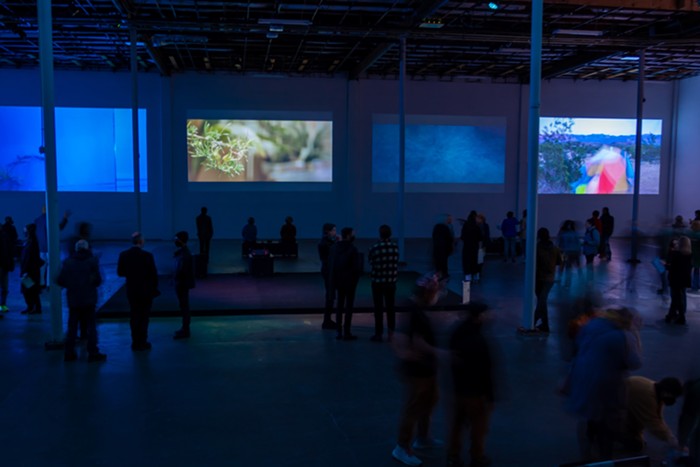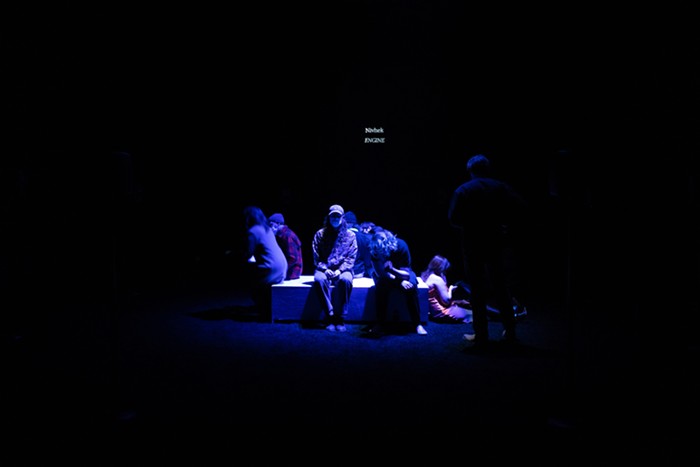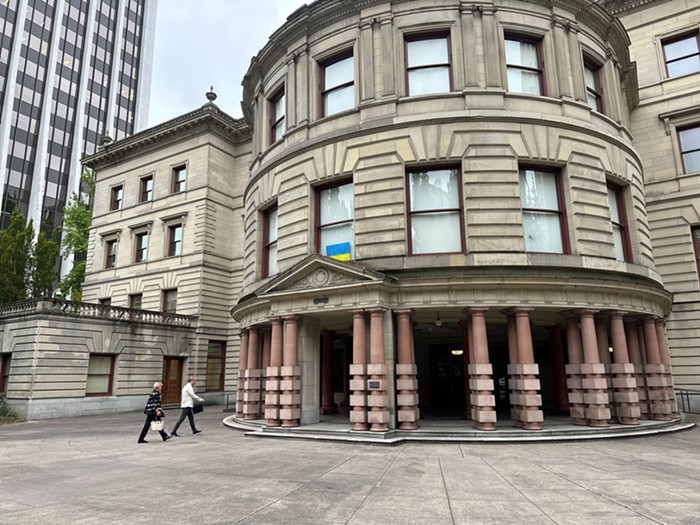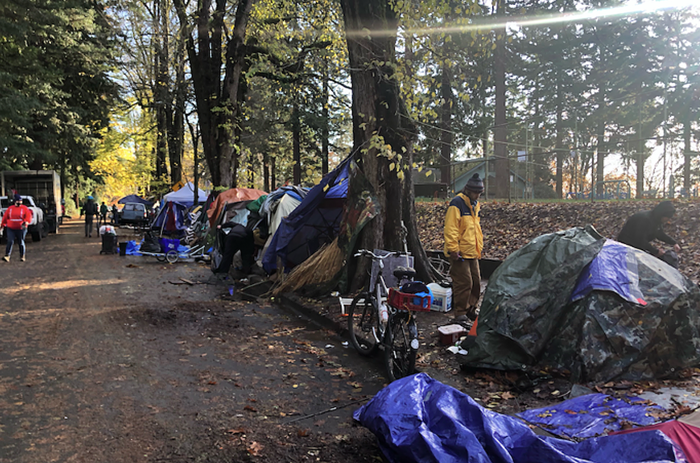Remembering To Remember Benefits From Repeat Visits
The real gem of PICA's new show is in the annex—the presentation is a wonder.
Portland Mercury's Spring Arts Preview: The Look of Love
A new way to look at—and love—the arts & culture scene in Portland.
ILY2 (or I Love You Too) Takes Root
Portland's newest contemporary art venue previously existed as an emotional-support hotline and a pop-up "glamshot" photo studio at the Lloyd Center.
Hot Take at Portland State: Looms Are Computers
At Weaving Data, nine artists explore the shared history of textiles and tech.
Portland Perfumer Emily Schaber Blends Science and Art
Her COVID-born label, Shelter In Perfume, aims to tell stories through fragrance notes and complications.
Front Porch Sessions Is a Loneliness-Destroying Storytelling Show
Chris Williams' community-building series is simple in format, but built from a dense amount of knowledge and experience.
Drinks Before or After?
A guide to Portland art and performance venues, and where to talk about the show—after the show.
Your Guide to Spring 2023 Arts Events in Portland
Guillermo del Toro: Crafting Pinocchio, Hairspray, and More
Presenting sound art in a gallery setting is a unique challenge for any curator or designer. Variform, the long since closed art space run by acclaimed musician Patricia Wolf and her husband, was successful on that front by keeping visual distractions to a minimum—all the better to concentrate on the field recordings or drones pouring out of speakers placed around the room. Other spaces tend to pair the art with video or other works as complements to the sound.
Remembering to Remember: Experiments In Sound, the new exhibition co-curated by Roya Amirsoleymani and Felisha Ledesma at the Portland Institute for Contemporary Art (PICA), aims for somewhere equidistant between those two approaches. The organization’s cavernous gallery space presents new and revived pieces from a collection of international artists with both contextual visual elements and zero interference.
The visual elements approach makes for a striking entry point to the exhibit. Four films are projected on the gallery’s east wall, the images equidistant from one another and with the same aspect ratio. In front of each film is a small bench with two sound boxes and headphones. The idea is easy enough to grasp: sit down, slip on the cans, get lost. Nearby is a table filled with keyboards and Eurorack gear from the Synth Library, an institution—which Ledesma helped co-found in 2016—that holds workshops and loans gear for artists of all skill levels. Volunteers from the library will be on hand, during special open hours at the exhibition, to encourage visitors to twist some knobs and plug in some patch cables. And in the center of the room is a small platform where live performances and workshops will take place.

It’s a feast for the eyes but feels unusually skimpy when it comes to the aural. Two of the films—Alison O’Daniel’s 2013 work The Tuba Thieves and Tomoka Sauvage’s Barrissando—emphasize finding the wonder in everyday noises. The former takes viewers into a truck transporting plants with mostly ambient audio (rain hitting the outside of the cab, the radio playing the news). It was lovely to look at and listen to, but left no real impression. The same went for Barrissando. The film consisted of a disembodied hand appearing on screen to run a finger along a steamy mirror, eliciting squeaks and cries from the friction. The audio was sent through effects to echo long after the hand disappeared, but it was hard to really appreciate that with the low volume in the headphones and the ambient chatter of the attendees of the opening night party.
The real gem of Remembering To Remember is in the building's annex where five new sound works run on a loop through an eight-speaker sound system. The presentation is a wonder. The room is entirely black (carpets, walls, speakers and stands) with a small seating area illuminated in the center. As each subsequent piece plays, the name of the work and its composer appears, projected on one of the room's walls. It works brilliantly even in spite of the ambient noise from the main gallery and the occasional intrusion of folks wanting to hold full volume conversations in the room.
The annex's portion of the exhibition worked best when the pieces being presented hit levels of near-discomfort. ENGINE, a piece from Liz Harris’ experimental alter ego Nivhek, was a gloriously overwhelming collage of electronics and noise recordings captured at Portland International Raceway’s drag races. I was enjoyably unnerved by Saint Abdullah’s Breathe, which puts listeners dead center within the breaths of someone huffing and puffing, as they climb a long metal staircase. The jewel of these works, though, was a collaboration from Indigenous experimental artists Suzanne Kite and Robbie Wing that beautifully blended field recordings captured in South Dakota and a poem that spoke to the uneasy relationship between nature and modern technology. The full 12-minute piece was damning and exhilarating.

Appropriately enough, considering the title of this exhibition was borrowed from a quote by renowned sound artist Pauline Oliveros, I’ve been haunted by flickers and small snippets from Remembering To Remember in the days since its opening. The exhibition seems ideal for return visits to catch fresh nuances and details in the work on display, as well as digging deeper into the live performances and workshops happening throughout its run.
To that end, you’d do well to be on hand for the performances happening as part of Remembering To Remember in early March. Of particular note is the event on March 3 when Liz Harris will be performing an expanded version of ENGINE accompanied by a film from Takashi Makino. She’ll be joined by Korean-American sound artist Lucy Liyou whose thrilling album of text-to-speech experiments Welfare / Practice was one of the best releases of 2022. You’ll also not want to miss appearances by Nyokabi Kariũki, a musician from Kenya whose forthcoming album Feeling Body is a wild mix of field recordings and the sounds of her own body, and Iranian-born artist Sholeh Asgary, whose work with soundscapes moves audiences outward and across time-keeping signifiers, like clocks and running water.
Remembering to Remember: Experiments in Sound is on display at Portland Institute for Contemporary Art, 15 NE Hancock, through March 19, tickets and info about live music performances and workshops can be found here.













